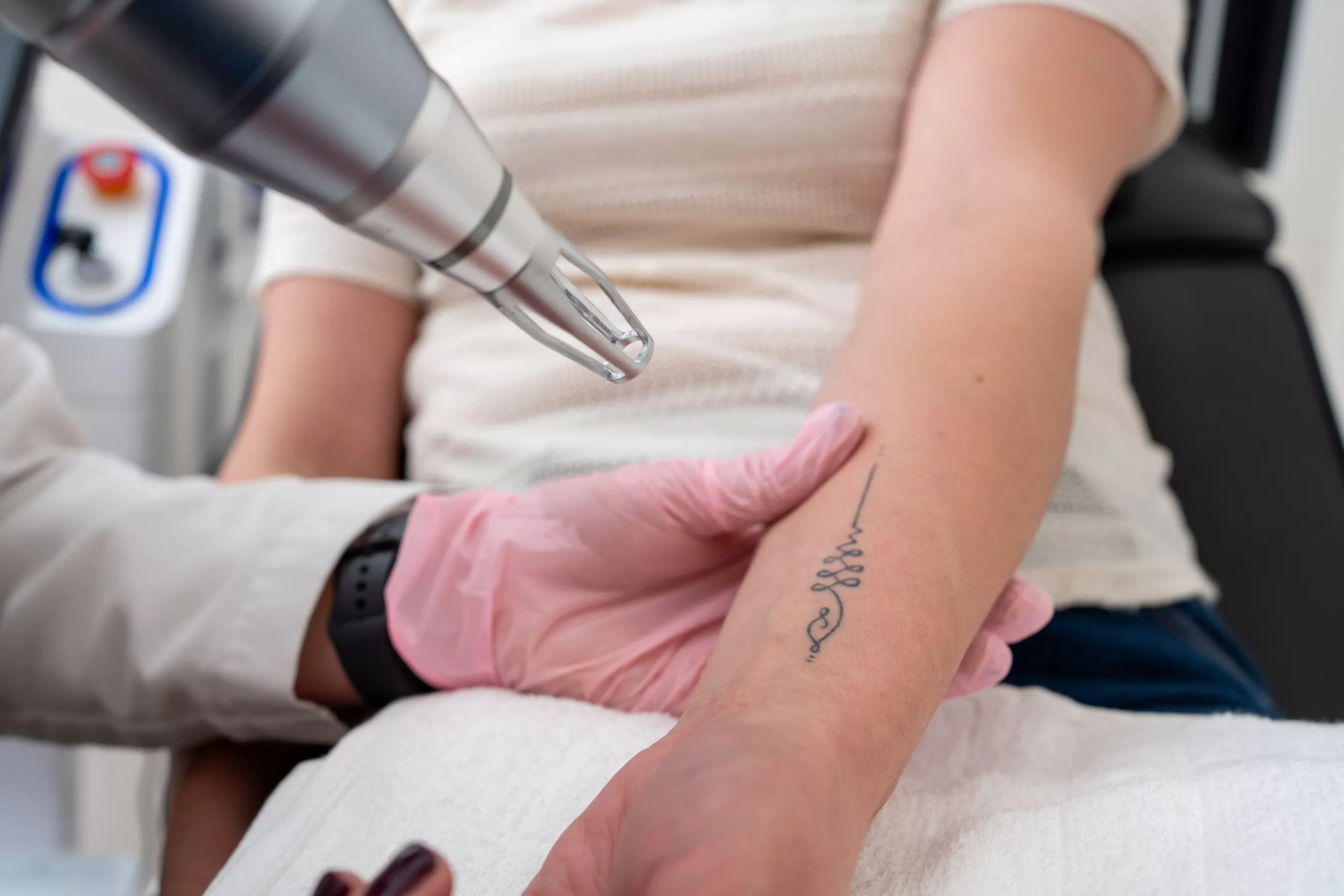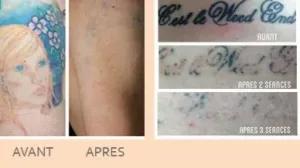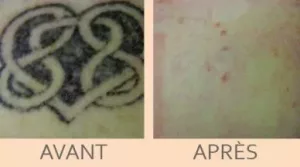
The Q-switched laser delivers high-energy pulses in the nanosecond range, triggering photothermal pigment degradation.
It is equipped with three useful wavelengths to allow the widest range of treatments:
For tattoo removal, this laser is less effective than the Picosure laser because it requires more sessions at longer intervals and is not effective on blue and green pigments.
The Q-switched laser is therefore primarily indicated for light-skinned patients with sun spots (age spots or “brown spots”), café-au-lait spots, dark or red tattoos, preferably small and sparse.
For the most difficult tattoos or those that require faster treatment, the Picosure laser is preferred.

The most common side effects of the Q-switched laser are post-treatment pain and redness, which may last for one to two hours. A fine scab then appears, and disappears within ten days.
On dull skin, this laser may leave white or brown spots for a longer period of time. It is therefore essential to discuss the benefits and risks of this technique with a specialist prior to any treatment.
The Q-switched laser can treat “sun spots”, but also erase tattoos, in synergy if necessary with the Picosure laser.

Examples of results after Picosure laser and Qswitched laser tattoo removal sessions.
